Basic rules for combining colors
In such an individual matter as color preferences, it would be strange to impose strict rules or pressure with authoritative advice, but we are not talking about choosing an outfit for a walk or even about buying a new furniture set. We are talking about a house, a large expensive object that will be in full view of everyone, so it would be useful to rely on the basic recommendations of architectural designers.
The combination of roof and facade colors can be:
- achromatic ― black and white tones, for example, anthracite roof and pearl gray walls;
- monochromatic ― shades of the same color that vary in saturation, for example, chocolate roof and cream walls;
- contrasting ― tones located opposite each other in the color wheel, for example, red-brown roof and soft turquoise walls;
- arbitrary ― shades that are not logically related in any way can also look good next to each other, but it is more difficult to create such a combination, for example, burgundy roof and ocher walls.
Shades of the achromatic spectrum are universal ― white, black, gray facades and roofs, in the absence of any deviations from the range, do not have temperature, only depth, so they harmonize well with both warm and cold colors.
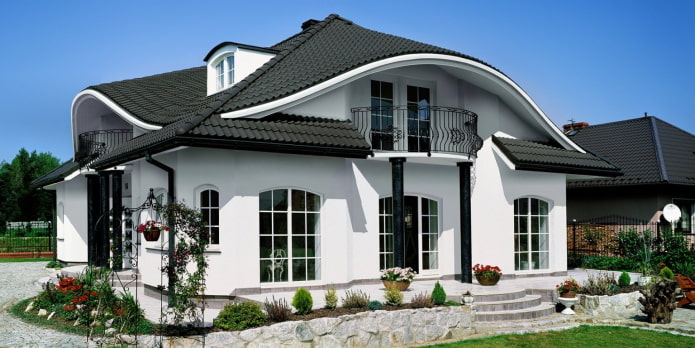
Rules for a successful selection of color combinations:
- Stick to the general color temperature. If the roofing material is dark emerald, deep and cool, lemon or light green plaster will suit it, and orange tiles go well with sunny yellow or beige walls. There are exceptions, for example, cherry-brown roofs sometimes surprisingly well “sit” on blue facades.
- Consider the size and configuration of the house. Light colors make the house look larger, while dark and saturated colors make it look smaller. In addition, the more complex the architectural forms, the calmer and more neutral the colors of the exterior decoration should be. A cottage with many refinements – turrets, dormer windows, balconies, columns, arches – should not be decorated too contrastingly and boldly.
- Stop at two, maximum three shades, otherwise any building, even a small and laconic one, will look motley and tasteless.
- Do not paint the facade and roof in the same color – the house will look heavy and boring if you do not introduce at least some contrast.
- Choose tones that match the style. Pastel shades are suitable for a cottage in a classic style, a rustic log house just begs to be crowned with a roof of deep natural colors, and a modern city house can be decorated more boldly and originally.
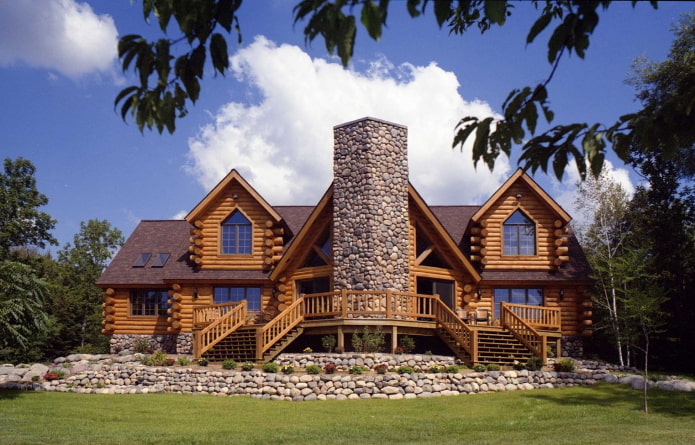
Recommendations for choosing a color scheme
Start by assessing the area, because the color of the facade and roof of a private house, and ideally its architecture, should fit into the landscape and be in harmony with neighboring buildings. Of course, if we are talking about a small summer cottage village, you can stand out from the crowd, but if you are surrounded by old buildings or natural beauty, you will involuntarily want to match them.
On the sea coast, houses in blue-white-light blue colors look appropriate, in the mountains – squat cottages with stone basements and sloping dark gray roofs, on the edge of the forest – log cabins with a brown or green roof, in a cozy suburb, surrounded by flower beds and orchards – residences of cheerful colors: orange, turquoise and even lilac, covered with approximately the same tiled red roof.
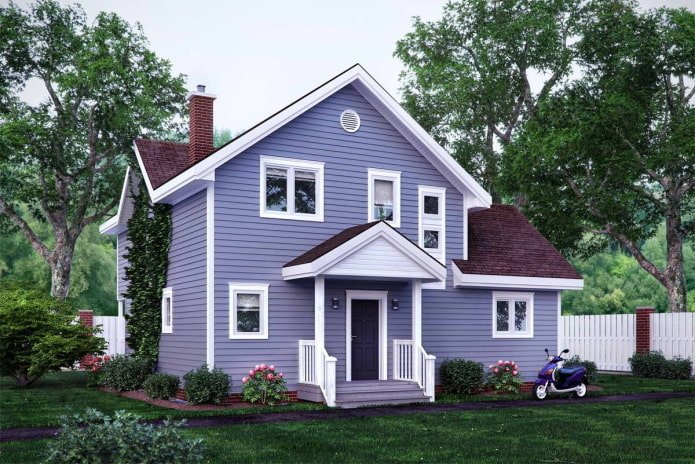
Think about the climate, because dark facades and roofs absorb light much more actively and heat up in the heat than light ones, and also fade faster in the sun.
If you want to use rich dark colors in the exterior decoration of your house, refresh the composition with light contrasting details, such as white cornices, window frames and decorative facade elements, otherwise your home will turn out too gloomy.
A white roof or facade is a controversial choice, because neither one will remain clean and beautiful for long. But if you are determined to use white, it is better to paint the walls of the house, because they are easier to tidy up than the roof.
Start from the shade of the roof when choosing the color of the house facade, and not vice versa. Although there is a wide choice of materials now – slate, corrugated sheet, ondulin, classic, bitumen, metal tiles – their colors are not so diverse. But the walls can be painted or plastered in any tone and relatively inexpensively redone if you are not satisfied with the result. By the way, the combination of a light facade with a dark or bright roof is much more popular than the opposite.
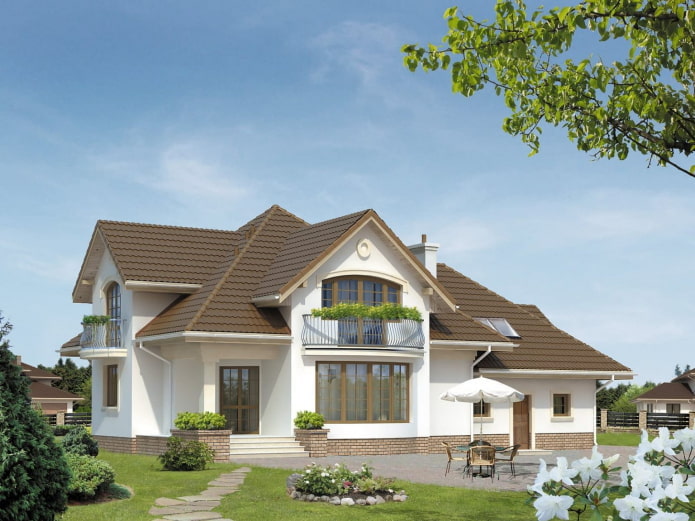
Use a planning program and create a three-dimensional model of the future house to evaluate its overall appearance with the selected colors.
Purchase finishing materials in person, examining them in real life, because in catalogs they can look completely different than in life, and the cost of a mistake will be high. It is better to buy several cans of paint or plaster of similar shades and choose the best color, painting literally one square meter of the wall next to the roof. Wait until it dries and evaluate the result at different times of the day, in cloudy and sunny weather.
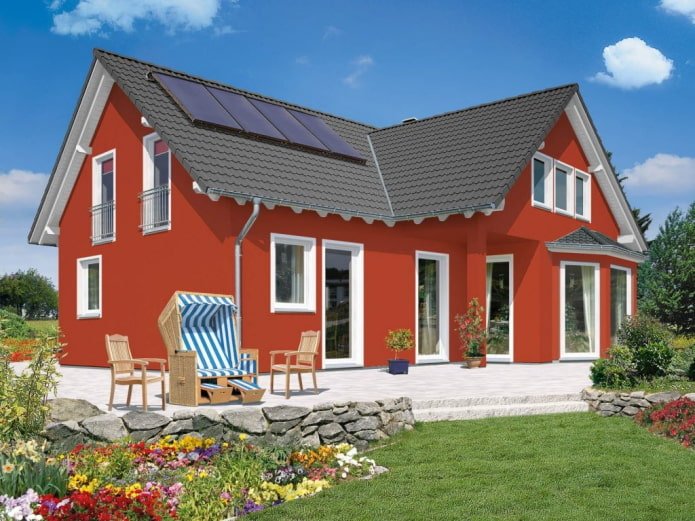
The most popular combinations and their features
Brown and beige
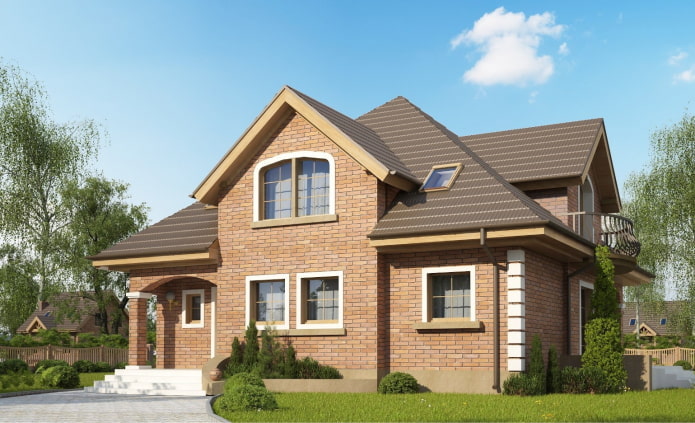
You definitely won’t go wrong if Decorate your private home in these soft, natural, eye-pleasing shades. They will fit into any style and any location, but such a simple color scheme implies the presence of interesting textures and non-trivial architectural techniques.
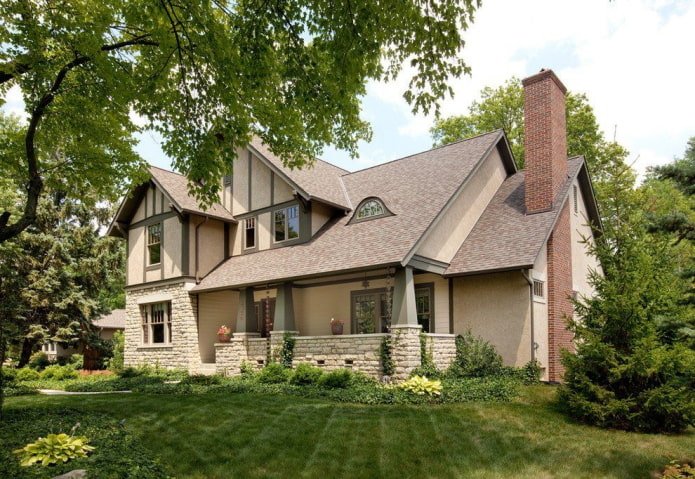
Gray and green
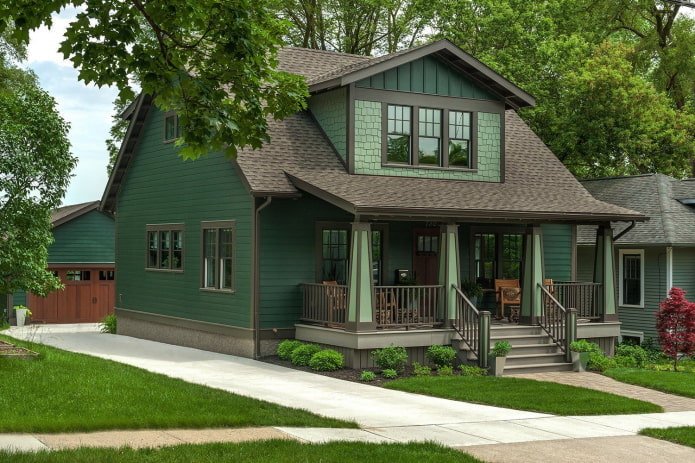
The gray color of roofing materials matches any facade finish, but with green – especially good. The darker the roof, the brighter the walls can be, and the choice of shades is rich: light green, grassy, emerald, swamp, olive.
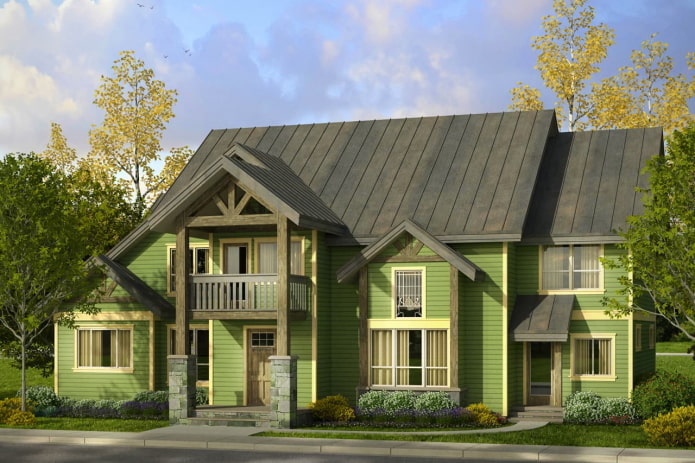
Red and orange
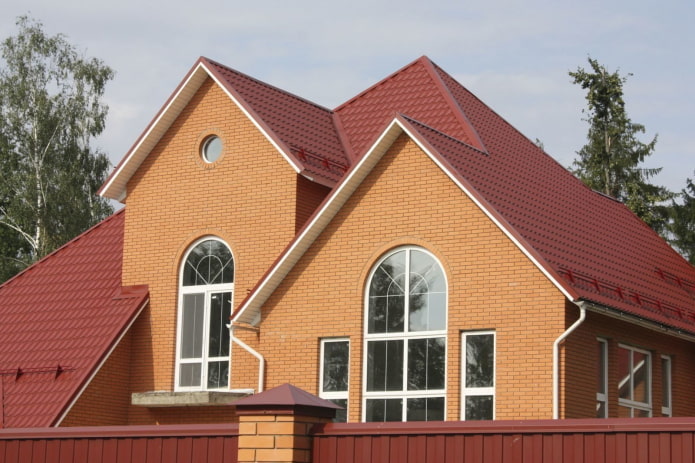
This is probably the most perky and life-affirming combination. It is very popular among summer residents, because it allows you to give even a tiny building a smart and dignified look, and it also looks great surrounded by a garden and vegetable garden.
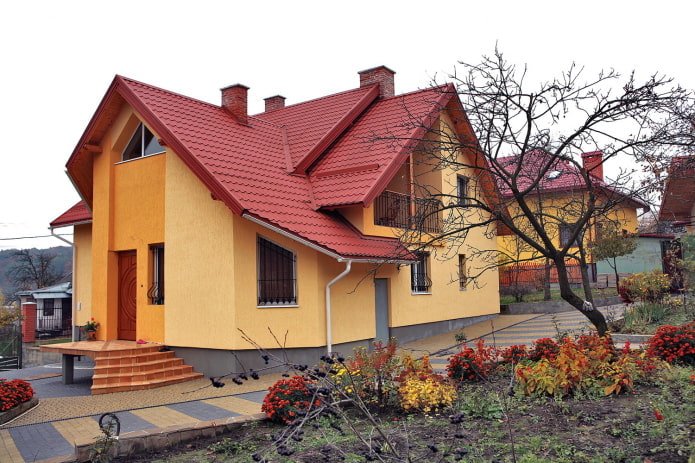
Green and yellow
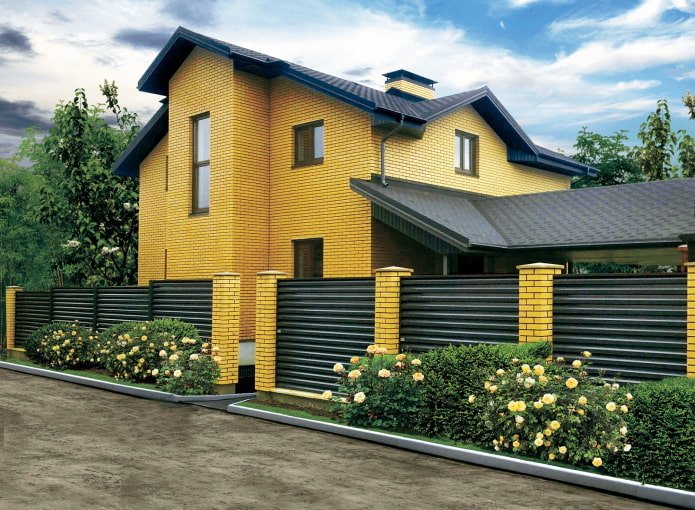
Such an ensemble needs Correctly adjust the temperature: the colder the color of the roof, the greener the shade of the facade should be. And keep in mind that this is a rather simple combination that will not add any sophistication, so we will also classify it as a country house option.
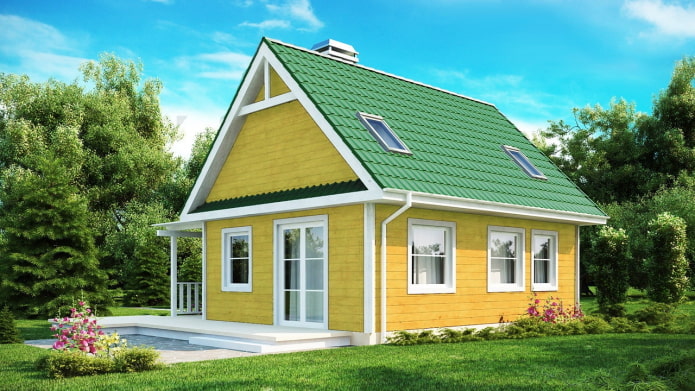
Blue, gray and light blue
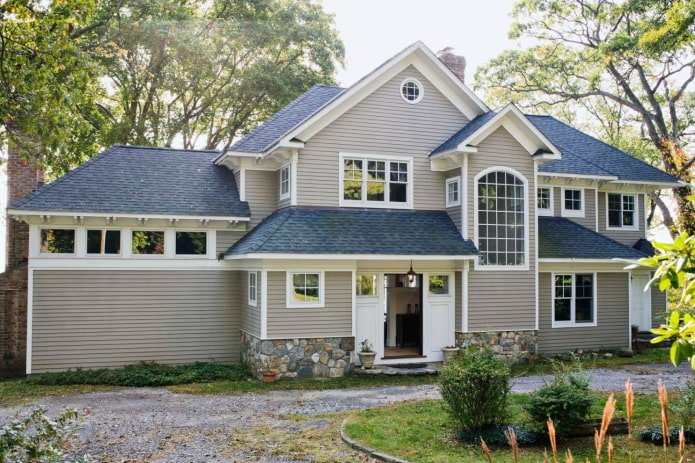
You can also decorate in blue and light blue tones a solid private house, especially if you choose interesting, complex shades, diluted with gray and as if slightly dusty. Now you can buy dark blue soft tiles with uneven coloring, which will add nobility to the composition.
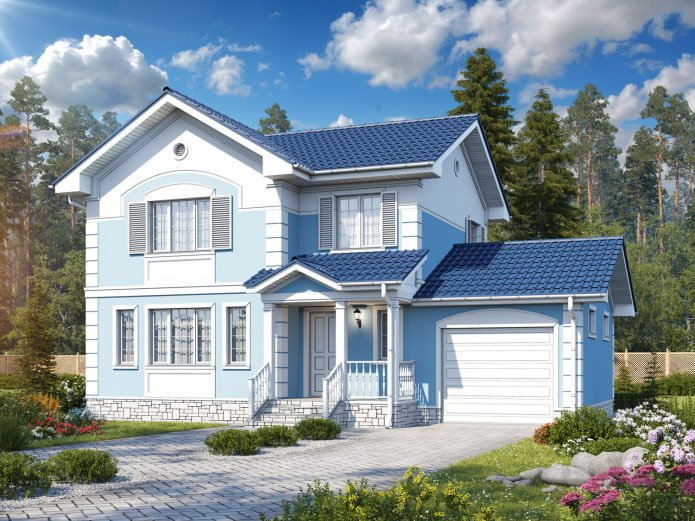
Cherry, pink and peach
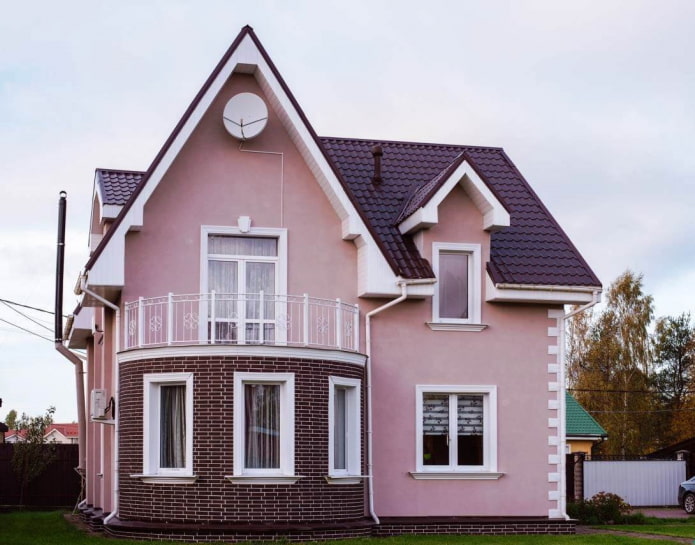
The rich cherry color of the roof harmonizes with many tones of the facade, but with soft pink and peach look especially warm, cozy and soulful. This is a great choice for a private home surrounded by a hedge and lush flowering flowerbeds.

Black, red and burgundy
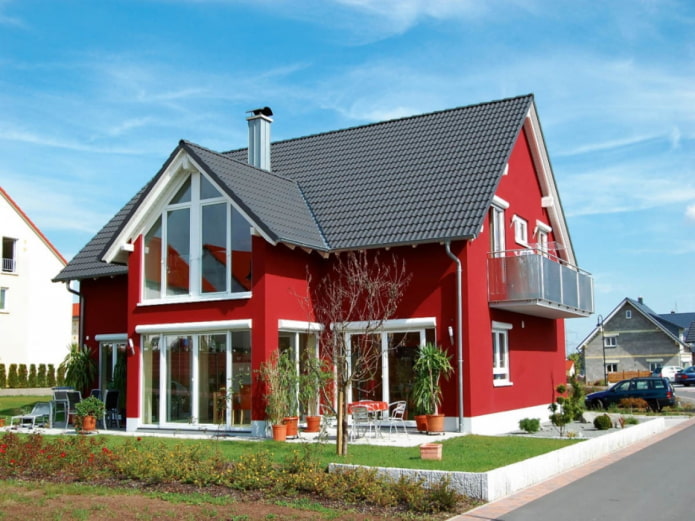
We will complete the selection of designs with a controversial, but bright and fashionable tandem. It is interesting because much depends on the shades. Juicy, “straight” colors can make a small cottage look like a tower, especially in combination with snow-white accents, but it is worth complicating and diluting the range, as gloss will immediately appear.
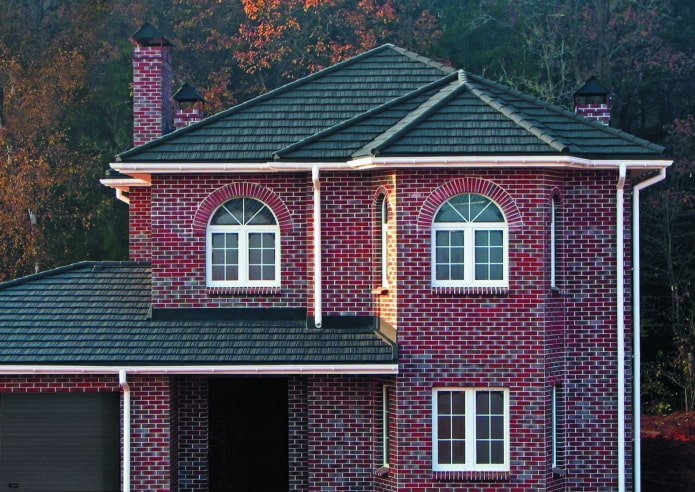
There are many attractive combinations, do not let this list of seven common options limit you. A table will help you choose a color, where designers gave a two to the most disharmonious color pairs, and a five to the win-win ones.
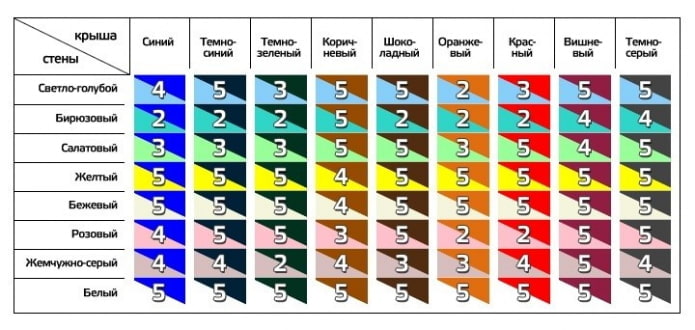
Now reading:
- Choosing a Carpet: 49 Design Solutions for Interior Design.
- Fiat Sedici: A Compact SUV with Style and Versatility
- 10 fastest growing trees for the countryside: conifers, deciduous and fruit trees.
- English interior: 57 photos and a complete guide to decorating your space.
- Toilet cabinet: more than 60 photos, modern solutions and examples behind the toilet.